Becoming Soil Farmers (Review: Sowing Seeds in the Desert)
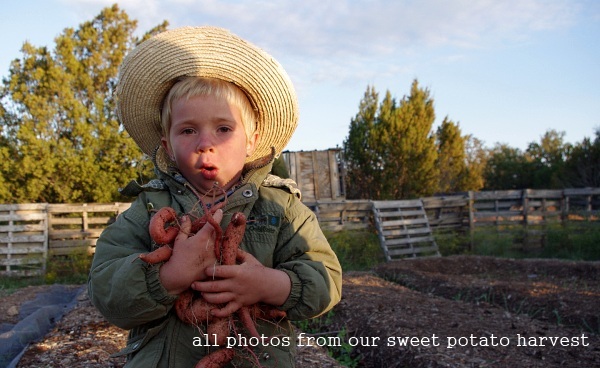
We didn’t know what we had until it was gone. I grew up in Minnesota, an area of the world that has fairly decent soil. As spankin’ new gardeners in Michigan we were able to dig up some ground, plant some seeds, water only rarely, and grow lettuce, leeks, tomatoes, herbs, and other bits and bobs without too much trouble from pests or depleted soil.
And then we moved to Texas on the heels of possibly the worst drought in history and I was shocked. I didn’t even know the land could look like this. We realized very quickly the importance of good soil, and that in order to create sustainable food production we would need to become soil farmers first.
I’ll be honest and say there have been a few times when I questioned whether or not we would ever be able to truly grow food here. The topsoil seems almost non-existent, having washed away from a ground left bare. But we dug up that hard clay soil, made the amendments we could at the time, and planted.
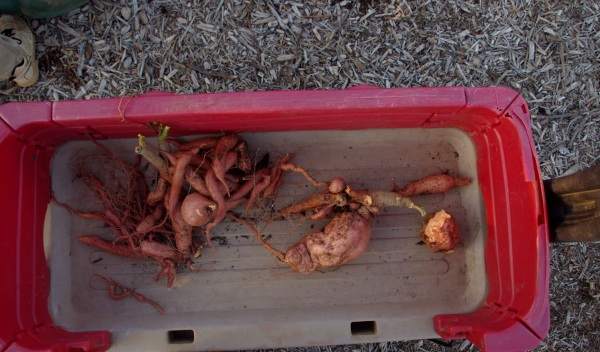
The results were dismal, but not a total wash. The soil itself barely gave life to those plants, never mind the grasshoppers that ate almost all of the seedlings, and the continuing drought and heat that killed off most everything else.
Now, many people refer to what we are doing as “homesteading”. I do too. But along with words come the ideas attached to them. And I think that how most people view homesteading is through the experiences of those that broke fresh ground in this country as they headed west and staked their claims.
The land we now inhabit is not fresh land, inhabited only by buffalo and prairie dogs. This land has been depleted, worn down, and rendered almost completely lifeless by decades and decades of misuse. Like just about everything else, soil, if you don’t care for it properly, will no longer do what you ask of it. So we need to somehow nourish this land in order for it to work for us properly once again.
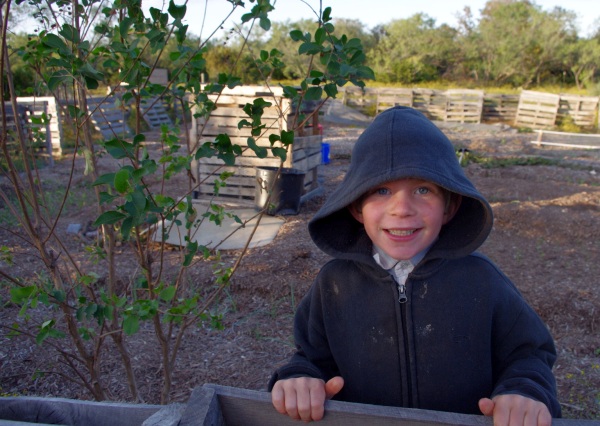
And I believe that we will learn some valuable physical and spiritual lessons through this process.
How Sustainability Really Looks
And so that is where we are – trying to rebuild a broken piece of land in order to allow it to bring forth food. This will always require work; a work that is necessary for the land, necessary for our bodies, necessary for our souls.
But, let’s be honest, most of us still think of food production in industrialized terms: field upon field of one crop, perfectly pruned rows of single plants in a garden, animals fed from feed bags instead of the land.
What I’m learning is that a self-sufficient homestead may not look like this. In order for every element of the land to feed off of the other in a symbiotic way perhaps we need more diversity, note-taking from what works in the creation, and certainly throwing off all ideas that are a result of industrialized farming.
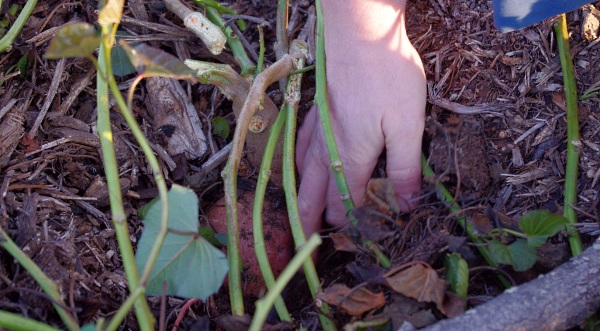
Where Sowing Seeds in the Desert Comes In
I recently read Sowing Seeds in the Desert by Masanobu Fukuoka. In the introduction his co-author writes:
People, with their limited understanding, try to improve on nature thinking the result will be better for human beings, but adverse side effects inevitably appear. Then people take measures to counteract these side effects, and larger side effects appear. By now, almost everything humanity is doing is mitigating problems caused by previous misguided actions.
And the only reason it has to be like this is because people stopped growing food themselves and started outsourcing it to those who would do it on a monstrously large scale.
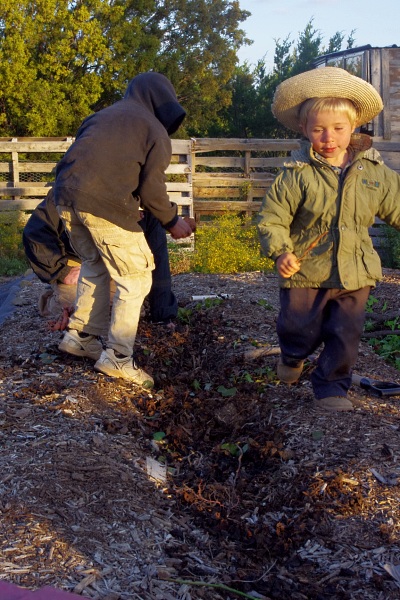
Since we see it as our obligation to work the land we are looking “outside of the box” for ways to make our two little acres more sustainable and productive with physical labor rather than gobs of fuel or money.
Shortly after we moved here we watched the Back to Eden film and realized that erosion and a complete lack of top soil were a huge problem. So we began planting a wood chip garden, which has helped somewhat.
Now we are exploring some permaculture options including inter-planting trees, vegetables and vines as well as creating swales and berms that will help the soil retain more water. Sowing Seeds in the Desert came along at just the right time in this process for us.
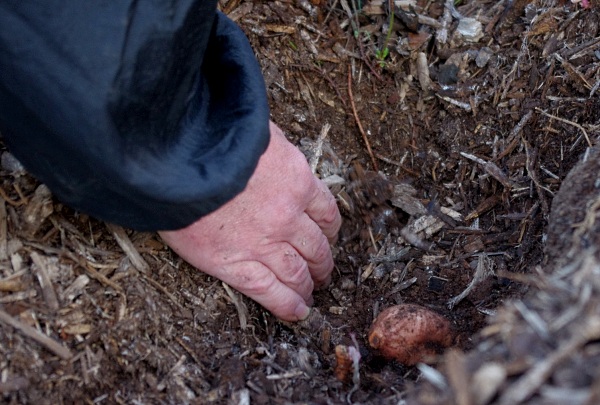
Much of the first half of the book covers Fukoaka’s ideology, of which I agree with none and found distracting at times. But once I got into the second half of the book I found some really interesting ideas for creating a sustainable food production system, many of which he has implemented in climates similar to ours.
Many parts of our little plot could be confused with desert soil – cracked and dry, sandy and windblown. This book has given us some hope that it is possible to repair the land and to do so simply through the work of our hands.
It may take years for us to really be able to implement those things necessary for a land healthy enough to bring forth our family’s sustenance. In the meanwhile, in between picking up shovels and getting dirt under our fingernails, we’ll continue to look to resources from Chelsea Green Publishing and others who have successfully created sustainable land systems before us.
How do YOU think we can heal the land simply by the work of your hands?

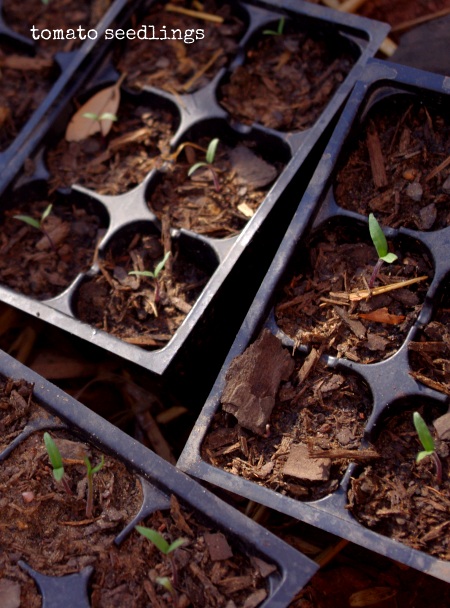
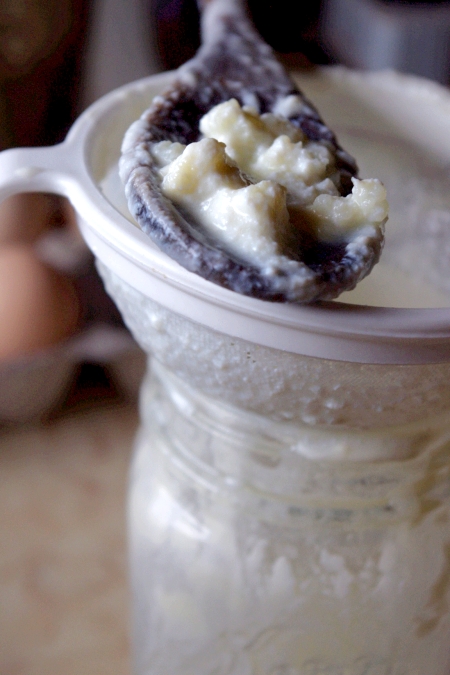
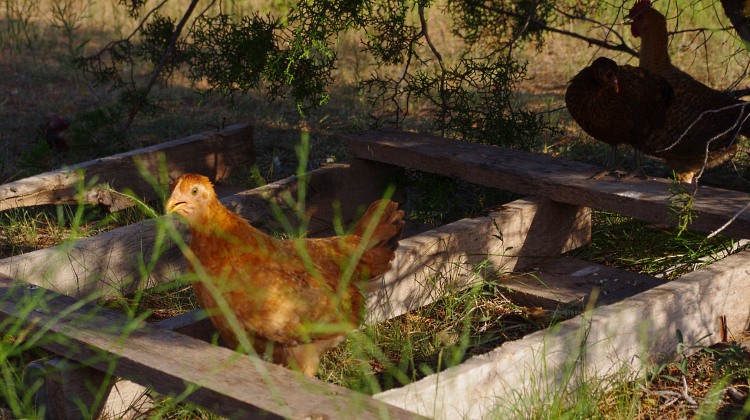
Have you seen the “Greening the Desert” videos by Geoff Lawton? It is a similar idea. They’re up on Youtube.
I am no farmer and no expert on growing food. When I was first married we planted a veggie garden, just some tomatoes and peppers. I knew nothing about the soil and didn’t want to bother with it. Only in the last few years I have learned that without good soil you don’t get good healthy plants. Now we compost and keep amending our garden soil. I learn from garden books I get from the library and the internet. Oh, I also talk to my farmers who always have beautiful veggies at the farmers market.
Another movie that has a lot of information about soil is called “Humus.” We watched it on the weekend and learned a lot about dealing with non-ideal soil conditions.
Have you thought about growing rabbits? They reproduce very quickly and their waste is gentle enough that you can put it directly on your garden. They provide an extremely healthy type of protein. We are using a deep mulch system with our rabbits, we don’t have them in traditional cages so we are able to put the straw and the droppings directly on our garden after cleaning their area. You might consider allowing the rabbits access to dirt so that they can dig burrows to gain shelter from the heat. To be sure they don’t dig out I would dig a large hole (2′ x 6′ x 6′ maybe) and then line it with a small gauge wire. Then fill the dirt back in and build a shelter about it.
Do you have access to some “old” manure piles on neighbouring farms? This would be a fabulous way to add nutrients to your soil. Here in the prairies of Canada we have a manure compost co-op program where one machine travels around the area turning manure windrows so the composting goes faster.
It really is depressing how we humans are destroying our soil. Especially since it is in the face of research showing how destructive current agricultural practices are.
You are fighting a noble fight. Keep at it and you will succeed.
I agree about rabbits, though I’m not sure how they would handle the heat in Texas. Something to consider, though.
Thanks for the book review; I just put it on hold at the library. I live in Northern California and the soil SHOULD be fantastic, but where we live, specifically, it’s horribly compacted from years of being trod upon by cattle. Sometimes I despair to think we might not be able to heal the soil. But in just one season our beds are lighter and full of earthworms. It takes a tremendous amount of work, but it’s worth it.
I’m not an expert gardener by any means, but grew up in Texas and we always gardened. My mom was a big believer in the Neil Sperry Texas Gardening book, though I can’t say I’ve read it.
We used amended soil and/or raised beds and had the help of drip hoses and it was still difficult by high summer. We always planted heat and drought tolerant varieties, but you still had to accept that in Texas the plants die in the peak of summer just as they do in winter. All the tomatoes would set fruit early, but also stop producing when it got too hot.
My aunt kept rabbits for a while as well as other animals, so there must be some that can take the heat. In fact I knew someone with rabbit problems.
Of course, this is from NE Texas. It depends which part you all are in.
We have the opposite problem with wet soil but the same ideas would work. Planting permaculture way is what we are doing as well. We are incorporating other plantings that we can green chop right under the trees for added nutrients and to pull nutrients up from deeper in the ground. I have willows planted to help take up water so I guess you would do plants that help store water and give some shade to help preserve moisture. I agree with the rabbits too. I have a buck and two does on order for spring so we can have them for meat(easy for us to butcher ourselves), fur, and manure. We do have a worm bin, chickens, and goats that we get soil building supplies from. I also found that if I only take small amounts I can harvest some rotting trees from our woods that helps add microorganisms into the compost pile to get the whole thing breaking down well. I figure it will take us a few years to really get going. All good things take time to grow right? It is a spiritual lesson as well. Patience is definitely fostered in the garden as in life. May God bless your soil with many worms.
We’re in SW Oklahoma and seem to have a similar climate. Hot days in the summer of 108-114. Anyway, I agree about the rabbits. There are a couple of ways you could help them handle the heat. We have ours in what used to be our chicken tractor, a 5 x 9′ movable pen with upper loft for sleeping and getting out of the wind in the cooler times of the year. Since we’re not off grid, we use old 2 liter juice or soda bottles frozen filled with water and take those out to the pen for them to lie against.
Another method that an older lady we know (with more land than our 1/5th acre) does is to make a large pen with the fencing down into the ground a few feet. They used to house an alligator in this enclosure, to give you some idea, lol. Then the rabbits can naturally burrow down into the ground and spend most of the day underground where it is cooler. They come out and are active in the evening and at night.
We also enrich our soil with worm castings, worm tea, and purchased fish emulsion (from Azure Standard), just depending on the time of year and what we have the most of. A couple of times a year, we also clean out the chicken coop and put the litter on an area of the garden not currently in use. If we don’t have an available spot, we add this to our compost pile.
Hello Shannon,
The advice about watching ‘Greening the Desert’ is gold. Watch it.
Gather whatever manure you can and compost it with your woodchips or whatever carbon source you have. You are then fast tracking the creation of SOIL, as opposed to planting a plant or seed in what appears to be the surface of the moon, then just mulching and watering it and expecting results.
A lot of woodchip mulch will conserve water, and is a step in the right direction as far as creating favourable living conditions for microbes, but it’s too much carbon. You will experience ‘nitrogen drawdown’ whereby any nitrogen that you apply to the planting area is swiftly grabbed for the purpose of breaking down your sea of mulch instead of remaining available to your plant.
You do want this process of breakdown of the chips to occur, but you will need MORE manure than you think to get the carbon-nitrogen ratio to a point where proper soil formation is underway. Crucial to all of this is adequate moisture.
So this is where permaculture and it’s concept of ‘guilds’ of beneficial plants planted together comes in.
North American Indians planted corn-beans-squash in one hit; corn provides a trellis for the beans, which provide nitrogen for the corn, while the soil is kept cooler and even-temperatured by the squash/pumpkin….living mulch, if you like.
This is one example of a simple guild of species, and a little research and thought will make evident guilds to suit your area and what you are wanting to grow.
I hope this finds you well,
Justin
Western Australia
Justin, my friend, your wisdom is so helpful! Where did you learn this stuff? Will put Greening the Desert at the top of the list.
Is the nitrogen problem true for hugelkultur as well?
And maybe you could tell me if what you’re talking about with the woodchip garden is what happened last year with our beans. We planted in some rough soil below the woodchips to see what we’d get. The beans all turned a yellowish color, which I remember as nitrogen-deficiency on our cukes, and were very stunted. That is until the cows ate them all. Anyway, is that the problem with the beans in the mulch field?
Also, any ballpark guess on chicken manure to woodchip ratio and can we plant under a mixture of those two things or won’t the manure be too hot/acidic?
Thanks much! Maybe you should be writing this stuff ;).
Hello Shannon,
I couldn’t remember which area of your blog I wrote my earlier response in, and have only just found this spot again…
I wanted to add to what was mentioned earlier another technique that is a winner if your manure supply is insufficient for your obvious needs- GREEN MANURE
This means a sacrificial crop of anything bulky and nitrogenous planted in advance of when you plan to put in your actual food crop- think broad beans, field peas, lucerne/alfalfa, ummm…clovers, sunflowers, aahhh….you get the idea; legumes basically. But your key here is variety; biodiversity in your selection of green manure species- root depths vary; mineral uptake varies; water and shade requirements vary, etc, etc.
Once planted, the green manure should be ideally dug in and incorporated into the soil BEFORE flowering, but it’s not a deal-breaker if you’re a little late. Doesn’t have to be pretty or look like it’s been laser levelled- just chopped up and dug in.
Then plant your seeds or seedlings into it.
Might take a couple of weeks, ten days, to see any real results of this effort; the rotting of the vegetation and the microbial activity takes a while to ramp up and subsequently transfer this process onto your ocean of wood chips, and begin the formation of soil, and H2O is key, obviously, to any soil life, but once done you will be heading in the right direction.
This is the way it occurs in the natural world, just that now you won’t find yourself doing anything that stands in the way of that occurring.
Now, I’ll try and address some of your questions directly.
I learnt this stuff the proper way- experience and observation, much error, much trial, much experimentation, many gardens in many soil types in many places around this wide, brown land.
This is the second time I’ve heard of Hugelkultur; upon investigating it further, and I am speaking after the most cursory of examinations of a gardening method that I have never tried- No, I don’t see nitrogen drawdown as being an issue in that system, as it uses compost in the rows, which are essentially in-situ compost rows with food crops planted directly into the pile making use of the conditions. If the semi matured compost that is a component in the layering up of the rows is good, manure-rich,- or alternatively- legume-rich stuff, then the composting microbes will simply continue on their activities into the surrounding layred materials, and the worms mix it all through and hey presto, your mounded row settles into more of a raised garden bed over time as the breakdown continues.
OK, the question about your beans in the bare soil vs beans in the ocean of wood chips.
The bare soil is like the surface of the moon, as far as being a place where the kind of critters you want doing their thing and churning rotting organic matter through the dirt and creating living soil is concerned. Yes; you did good by adding mulch to it. But you added too much, full stop, by the looks of things. No matter, you just overdid it a bit, no worries. If you are going to put that much of one type of carbon source on your garden, you need correspondingly correct ratios of certain other elements present at the same time, or you will continue to see results like you have.
Look at as many pictures of compost heap consruction as you can for half an hour or so. All have about the same basic ideas and approach behind them (including your Hugelkultur) and that is to assemble, lasagna-style, layers of earth, manure, carbonaceous material (straw, chips, sawdust, leaves, twigs), and either mixing them or leaving them static, doesn’t matter, and the addition of H2O and air, and voila, they rot or compost down.
This is the process you are attempting to replicate in your garden, or at least you should be, so if you have a staggeringly high ratio of, say, wood chips (carbon source) to your supply of earth(dirt), water, air, and manure or other nitrogenous material, nothing’s gonna happen. Nothing good. Readdress the balance of the other elements and success is yours.
Last question; should you plant into chook manure and woodchips? No. Yes, it would be ‘too hot’.
Make a series of composting bays out of your plentiful timber pallets, fill all but one with layers in the appropriate ratios of earth, chips and straw, manure, water, leaves, air, keep moist but not wet, turn each bay every two weeks into the adjacent empty bay, wet down and cover with bags, or plastic, or shadecloth, or.. I dunno.. carpet underlay, anything, and do this for a couple of months in the summer and at least twice as long if it’s cool, AND THEN AND ONLY THEN plant into this rich humus in rows in your garden beds.
Ratios? Carbon to nitrogen- 25:1
Remember that the air, water, and earth components of your compost air kind of the non-tweakables in this equation; have goodly even amounts of each of those 3 factors, and concentrate your energies on getting the C:N ratio cooking. Too much N means sour smelling off compost pile; too much C means everything happening slowly but poorly; not enough H2O means nothing happening period; not enough air means also a sour anaerobic heap.
So mess with these factors and see if you can’t embarrass yourself and the community by how much you can tap into God’s providence now that you know what you’re meant to be doing and how to get there!
Hope this finds you well,
Justin
Western Australia
Thanks for getting me thinking about soil and how important it is for all our lives. I live in a climate that has much water and heat (Florida)but washes away nutrients as fast as it produces them. Over the years I have tried various methods of improving my soil: green manure, mushroom compost (hauled in and $$$), homemade compost, and mulching on site. I have had the best results with the current system. I keep rabbits and use their soiled hay and manure directly on the garden throughout the growing season. There is also an area near their cages where the manure falls into worm beds for additional composting and worm castings to be used on the garden later. I mulch the garden after planting with newspaper or cardboard and leaves. This keeps the soil from eroding in heavy rains, cools the root zone of the plants, and helps retain nutrients a little longer. The combo plan has helped build up my garden after ten years to a very loose, fertile, worm-rich soil. I still use a seasonal dose of organic fertilizer after planting for additional trace elements, but that is all I generally need to produce a good crop. The rabbit manure and worms really helped with the soil fertility. I keep my rabbits outside in heavy shade to keep them cool. Hope this helps!